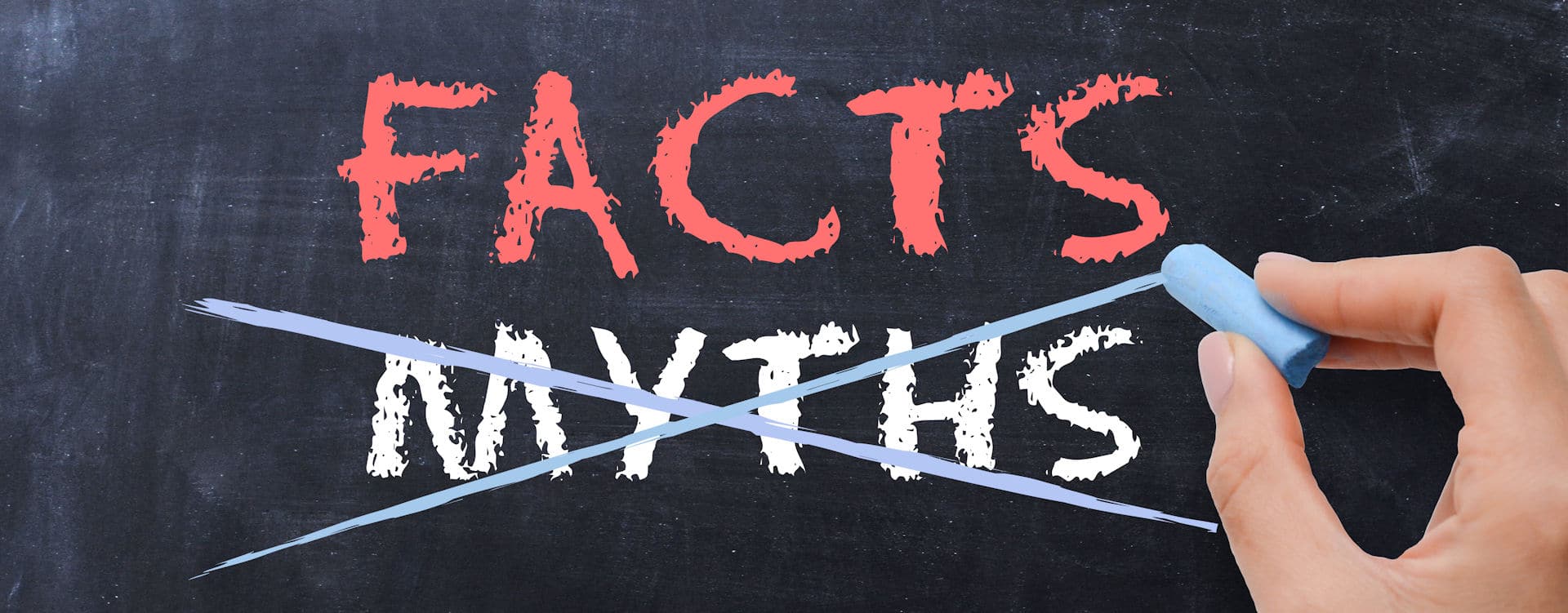You’ve likely come across various stories about bipolar disorder. Perhaps you or someone you know has it. The problem is that there are a lot of myths and misunderstandings out there about this mental health condition. As someone who cares about getting the facts straight, Eagle Creek Ranch Recovery’s rehab center in Nampa, Idaho educates our clients and their loved ones about bipolar disorder.
From how this mood disorder is diagnosed and treated, we provide the tools and resources for successful recovery and aim to avoid the possibility of misinformation and raise awareness about stigma. Here are myths about bipolar debunked.
What is Bipolar Disorder?

While bipolar disorder is a chronic illness, it can be effectively managed with proper treatment, such as medication and addiction therapy services. Many people can gain control of their symptoms and live full, productive lives with proper diagnosis and treatment, which begins with a comprehensive psychiatric evaluation. Additionally, cultivating a strong support system and adopting healthy lifestyle practices can contribute to the successful ongoing management of this condition.
The Relationship Between Bipolar Disorder and Substance Abuse
There is growing evidence indicating that individuals with bipolar disorder who also engage in substance abuse have a tendency to develop the illness at an earlier age and experience a more severe trajectory compared to those who do not. These individuals are more prone to experiencing irritable and dysphoric mood states, displaying increased resistance to treatment, and requiring more frequent hospitalizations. It is important to exercise caution when diagnosing bipolar disorder in the presence of substance abuse due to the overlapping symptoms that can complicate accurate assessment.
Research indicates that a significant percentage of individuals diagnosed with bipolar disorder, whether bipolar I or bipolar II, will experience a substance use disorder (SUD) at some point in their lives, ranging from 30% to over 50%. This dual diagnosis poses challenges in terms of the progression, identification, and management of SUDs.
Moreover, individuals who exhibit hypomanic episodes, not just those meeting the full criteria for bipolar disorder, are also at an elevated risk of developing an addiction. Alcohol misuse is prevalent among individuals with bipolar disorder, and those with both bipolar disorder and co-occurring alcohol use disorder are less likely to respond to treatment, adhere to treatment plans, and more prone to hospitalization and suicide attempts compared to individuals with bipolar disorder alone. In certain instances, the presence of both bipolar disorder and an SUD can intensify the manic and depressive symptoms of bipolar disorder.
Regardless of the underlying causes, it is evident that SUDs can manifest before, trigger, worsen, result from, or have distinct origins from bipolar disorder. The coexistence of bipolar disorder and substance abuse can complicate the process of diagnosing and treating both conditions. Nevertheless, effective treatments are available for bipolar disorder and SUDs, with the potential for remission and recovery, particularly when intervention occurs early.
Common Myths about Bipolar Disorder
Eagle Creek works with people with bipolar disorder and other co-occurring conditions. We see firsthand how misinformation in healthcare takes a toll on people. To that end, we have debunked the most common myths about bipolar disorder and revealed the truth. It’s important to dispel these myths to foster a better understanding of the condition.
Reality: While mood swings are a characteristic feature, bipolar disorder is a complex mental health condition that is more than that.
Bipolar disorder extends beyond ordinary mood swings, diving into a complex realm of mental health challenges. Rather than just experiencing typical ups and downs, individuals with bipolar disorder undergo distinctive phases of heightened energy and euphoria known as mania, followed by periods of profound sadness and lethargy called depression. This alternating cycle can significantly disrupt daily life, relationships, and overall emotional well-being.
Reality: Bipolar disorder is more common than people think. It affects approximately 2.8% of adults in the United States alone, according to the National Institute of Mental Health (NIMH).
Despite the misconception that bipolar disorder is rare, the reality is that it is a prevalent mental health condition that impacts a significant portion of the population. This condition does not discriminate based on age, gender, or background, and its effects can be profound and long-lasting if left untreated.
Reality: Bipolar disorder has biological and genetic factors. It is not caused by personal weakness or a deficiency in willpower.
It is crucial to debunk the misconception that bipolar disorder stems from personal shortcomings. In reality, this mental health condition is deeply rooted in biological and genetic factors that influence brain chemistry and function. Research suggests that individuals with bipolar disorder may have imbalances in neurotransmitters, structural changes in the brain, and a family history of the disorder, highlighting the complex nature of its origins.
Reality: With proper treatment, individuals with bipolar disorder can lead fulfilling and productive lives.
Contrary to the misconception that individuals with bipolar disorder are unable to live fulfilling lives, the reality is that with the right treatment and support, many people can effectively manage their symptoms and thrive in various aspects of their lives. Medications such as mood stabilizers, antipsychotics, and antidepressants, along with therapy approaches like cognitive-behavioral therapy (CBT) and psychoeducation, are valuable tools for stabilizing mood, managing symptoms, and enhancing coping strategies.
Reality: Bipolar disorder can impact various aspects of a person’s life, including sleep patterns, energy levels, concentration, and decision-making abilities.
Individuals with bipolar disorder may experience disturbances in their sleep patterns, ranging from insomnia during manic episodes to excessive sleepiness during depressive phases. Changes in energy levels, from heightened activity levels during mania to profound fatigue during depression, can significantly impact daily functioning and overall well-being.
Moreover, bipolar disorder can influence cognitive functions such as concentration, memory, and decision-making abilities. During manic episodes, individuals may exhibit racing thoughts and impulsivity, while in depressive episodes, they may struggle with focus, indecisiveness, and cognitive slowing. These cognitive challenges can interfere with work, relationships, and other important areas of life, highlighting the multifaceted nature of bipolar disorder.
Reality: There are different types of bipolar disorder, including bipolar I, bipolar II, and cyclothymic disorder. Each type has its distinct pattern of mood episodes.
Bipolar I disorder involves manic episodes that may be followed by hypomanic or major depressive episodes. On the other hand, bipolar II disorder is marked by hypomanic episodes alternating with major depressive episodes, without full-blown mania. Additionally, cyclothymic disorder involves numerous periods of hypomanic symptoms and mild depressive symptoms that persist over time.
By recognizing the diversity of bipolar disorder presentations, we can tailor treatment approaches to suit each individual’s specific needs. Understanding the distinctions between the different types of bipolar disorder is essential for accurate diagnosis, appropriate treatment planning, and improved outcomes.
Reality: While medication is often a crucial component of treatment, psychotherapy, lifestyle changes, and support networks are also important in managing bipolar disorder.
Therapies like cognitive-behavioral therapy (CBT) provide vital tools for coping and communication. These sessions offer a safe space to explore thoughts, enhance self-awareness, and build resilience against mood fluctuations.
Beyond therapy, lifestyle changes such as regular sleep patterns, physical activity, stress reduction, and healthy eating contribute to mood stability. Creating routines, avoiding triggers, and effective stress management are key aspects of self-care.
Building a support network with family, friends, and mental health professionals is crucial. Peer support and social connections reduce isolation, offer emotional aid, and promote recovery in those with bipolar disorder.
Reality: Bipolar disorder can onset in adolescence or even childhood. Early intervention and appropriate treatment are crucial for managing the condition in young individuals.
Children and teenagers with bipolar disorder may exhibit distinct signs and symptoms compared to adults, such as frequent mood swings, irritability, intense emotional outbursts, impulsivity, and difficulty concentrating. These manifestations can often be mistaken for typical developmental challenges or behavioral issues, highlighting the importance of heightened awareness and early detection in younger populations.
It’s essential to challenge these myths to promote understanding, reduce stigma, and encourage empathy for individuals living with bipolar disorder.
How Do You Find the Right Bipolar Disorder Treatment?
Finding the right bipolar disorder treatment involves a comprehensive approach tailored to individual needs.
The first step is getting the right diagnosis. See a psychiatrist who specializes in bipolar disorder and mood disorders. They will evaluate your symptoms, family history, and medical history to determine if you meet the criteria for bipolar I, bipolar II, cyclothymic disorder, or another related condition. An accurate diagnosis is key to developing an effective treatment plan.
With a diagnosis in hand, you can explore evidence-based treatment options like medication, therapy, lifestyle changes, or a combination. Medication, such as mood stabilizers, anticonvulsants, and atypical antipsychotics, can help reduce symptoms and stabilize mood. Psychotherapy, especially cognitive behavioral therapy (CBT) and interpersonal social rhythm therapy (IPSRT) teaches skills to cope with symptoms and make lifestyle changes. Maintaining a routine schedule, limiting alcohol and caffeine intake, exercising, and sleeping well also support stability.
Seek out mental health professionals with experience treating bipolar disorder. A good treatment team may include a psychiatrist, therapist, and care manager. They will work with you to develop a comprehensive treatment plan tailored to your needs and adjust it as needed to optimize your wellness and day-to-day functioning. The right treatment team can make a life-changing difference in managing this chronic condition.
Bipolar disorder is a lifelong condition that often requires adjustments to treatment over time. Meet with your treatment team regularly to evaluate how well your current treatment plan is working. Watch for warning signs of mood changes or medication side effects. Your team can adjust to prevent relapses, reduce symptoms, and maintain stability. Ongoing monitoring and a willingness to make changes will help ensure you have the best possible treatment for your bipolar disorder.
Eagle Creek Ranch Recovery Provides High-Quality Mental Health Treatment
Embark on a transformative journey to enhanced mental well-being with Eagle Creek Ranch Recovery. Our dedicated team is committed to providing high-quality mental health treatment tailored to your unique needs. We understand the complexities of bipolar disorder and offer a comprehensive range of therapeutic options guided by experienced professionals. Reach out to us today and take the first step toward a brighter future. Your wellness matters, and we’re ready to help you on your way to a healthier, happier life.

Clinical Director
Kendall Maloof is the clinical director at Eagle Creek Ranch Recovery. She is a licensed marriage and family therapist and has held multiple leadership roles before settling here at Eagle Creek. Kendall received her master’s degree in marriage and family therapy from the Chicago School of Professional Psychology in 2016. Her career in mental and behavioral health began in 2014 when she took up internships in both the nonprofit and for profit sectors. She interned at multiple reputable companies, such as The Living Success Center and 449 Recovery in California.
In 2019, Kendall became the clinical director of Sunsets Recovery for Woman, a dual diagnosis program in southern California. Kendall is a natural leader. She has an incredible ability to problem solve and stay calm in any situation. Kendall never fails to show up when she is needed, and her calm demeanor makes her team and clients feel at ease. Eagle Creek Ranch Recovery is proud to have Kendall as our clinical director.




